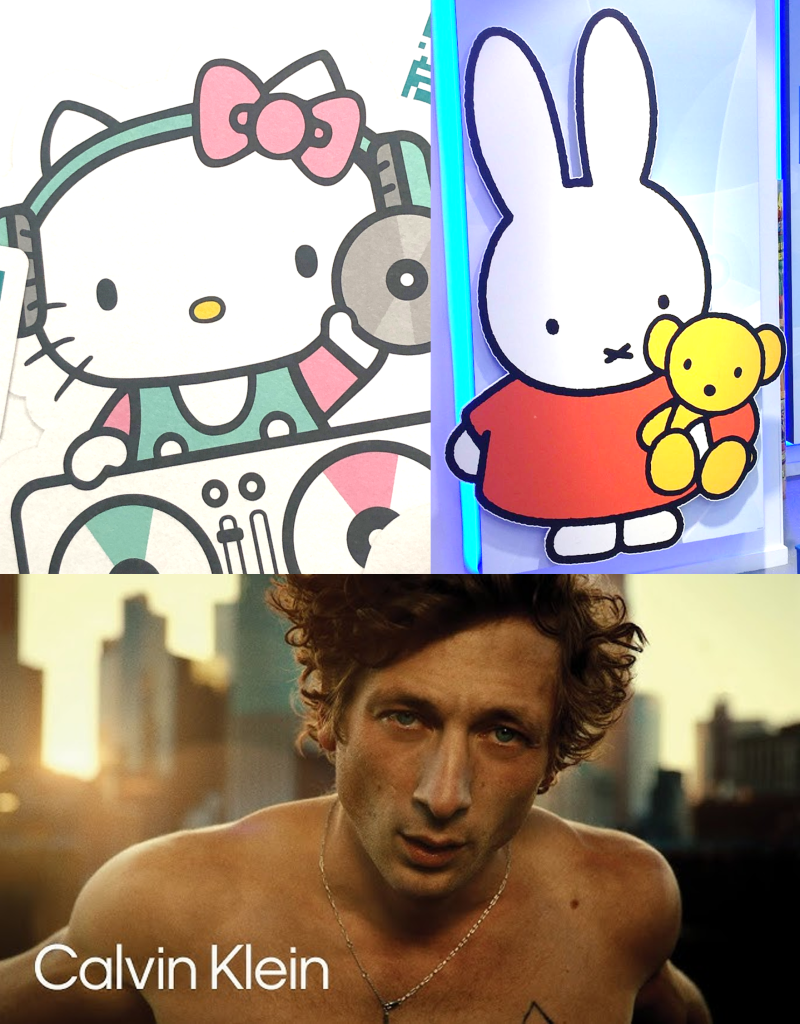Blank Expressions Make Us Feel Like Gods

Blank Expressions Make Us Feel Like Gods
Why do consumers enjoy blank expressions? Because they like being empowered to fill up empty spaces and decide what other people are feeling. It makes us feel like gods. #hellokitty #miffy #calvinklein
The blank expression erases or disguises any sign of internal life, transforming both people and illustrated characters into empty vessels, objects, mere shapes. Why is this valuable? Because it invests the viewer with power. It is entirely up to the viewer to decide what the object means. What is it worth to *me*, the viewer? What do *I* care about? What would *I* like this model to think or feel, if it’s up to me to put thoughts and feelings in their head? Is Miffy the rabbit or Hello Kitty happy or sad? It’s up to me, the viewer, the consumer of images, to decide. That’s a very powerful position.
Here’s a quote from the great postmodern thinker #Baudrillard, from his book “The Consumer Society”. He is describing the blank, empty expression of fashion models.
“[B]eauty here is wholly in abstraction, in emptiness, in ecstatic absence and transparency. This disembodiment is ultimately encapsulated in the gaze. These fascinating/fascinated, sunken eyes, this objectless gaze – both oversignification of desire and total absence of desire – are beautiful in their empty erection, in the exaltation of their censorship. That is their functionality. Medusa eyes, eyes themselves turned to stone, pure signs.”
And it’s not just about #fashion. Baudrillard emphasises that emptiness and vacancy are a highly noticeable aspect of postmodern consumer culture. We consumers love it. We love empty vessels that only we, like gods, are empowered to fill.
Today’s post was triggered by the fact that I’ve seen the #cute exhibition at Somerset House, about which I have a lot to say, so expect more posts this week. Photo montage as follows, clockwise from top left.
– Hello Kitty (photo from the exhibition programme). Note that Kitty’s face is so blank that she doesn’t even have a mouth. Created 1974, #Sanrio.
– Miffy the rabbit, or Nijntje if you are Dutch, by Dick Bruna, created 1955. I took this photo, it’s a display at the entrance to a respectable toy store in the Netherlands, where they were playing gangsta rap very softly (an interesting anomaly that I wrote about in my first book, ‘Using Semiotics in Marketing’).
– Jeremy Allen White wears a blank expression typical of fashion models in the new Calvin Klein underwear ad. A perfect illustration of Baudrillard’s observation re Medusa eyes, signifying both desire and the total absence of desire.
Cute at Somerset House: https://www.somersethouse.org.uk/whats-on/cute
‘Using #Semiotics in #Marketing‘ & ‘Using Semiotics in #Retail‘ are available worldwide from Amazon, all good bookstores and publisher Kogan Page https://www.koganpage.com/authors/rachel-lawes
#advertising #art #design #toys #consumers #consumerinsight #mrx #research #calvinklein
Kogan Page, Market Research Society (MRS), Lawes Consulting Ltd, Dr Rachel Lawes, Joe Lawes
© 2021 Lawes Consulting. All rights reserved.
Website By the Scruff

0 Comments